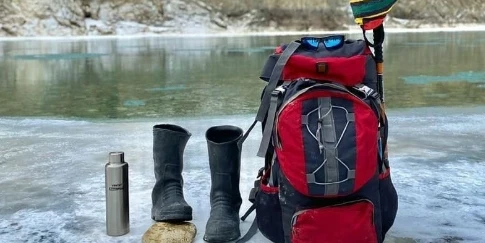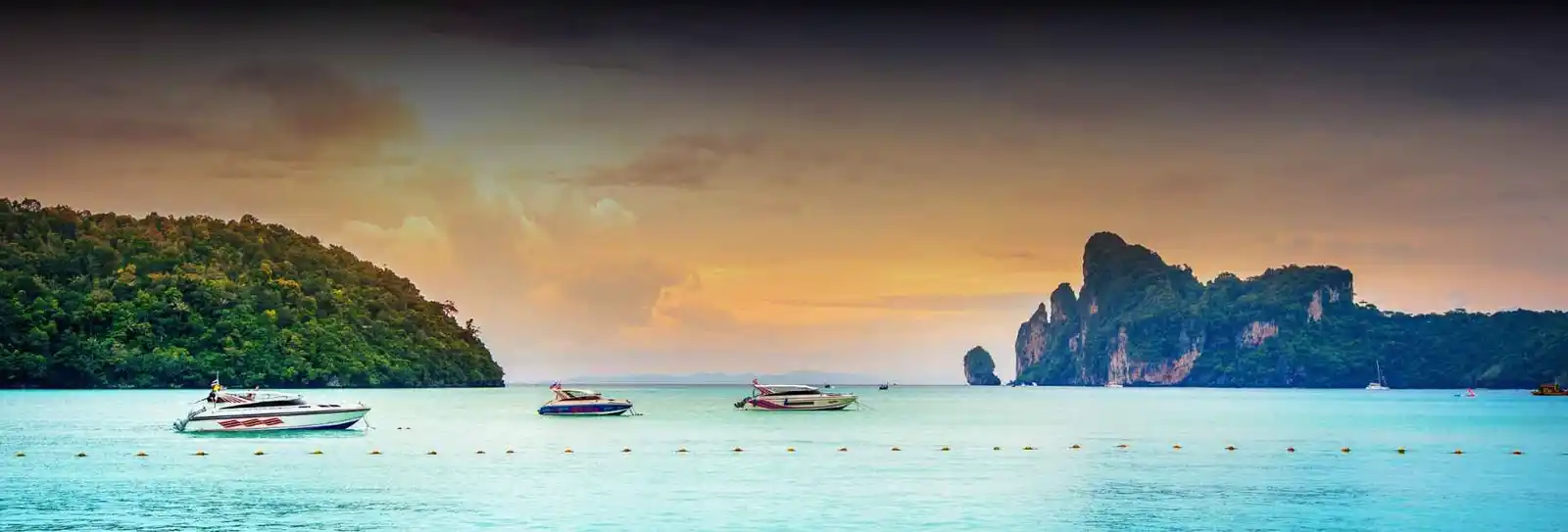
1. BackpackWhen planning an Indian trek, selecting the best backpack is one of the most important considerations in terms of comfort and convenience. In day treks, a 30–50 litre backpack is sufficient space to carry whatever one might need, including clothes, water, and snacks. For multi-day treks, select a 60-litre or bigger pack with sufficient space to hold sleeping equipment, additional clothing, and supplies. Make sure the backpack is light but sturdy, with padded shoulder and waist straps that can be adjusted to weight-bearing and reduce strain. A built-in rain cover in the pack is a valuable feature, particularly in areas prone to sudden rain showers. Having more than one compartment and convenient-access pockets also keeps your equipment organised.2. DaypackA daypack is a small, light pack (10–20 litres) that you carry with you to wear on short hikes, summit ascents, or daily outings from home camp. It's ideal for carrying around what you want at hand, such as water, a snack, a rain jacket, sun screen, a camera, or a first aid kit. A good daypack will be light and comfortable with cushioned shoulder straps, back panel breathability, and water bottle pockets or hydration sleeves. If the main backpack does not have a detachable section, then it is best to have a collapsible daypack as an independent item. It is very lightweight but provides total flexibility for your trekking experience.3. FootwearSelecting footwear is one of the most important things to do to get yourself ready for trekking. Buy an honest trekking shoe with grip, rigid ankle guard, and water-proofing, particularly for stones and oily surfaces. Bend them before use to help avoid blisters. Select the shoes with breathable material and cushioned soles for comfortable walking for covering long distances. Besides your main trekking boots, bring a light flip-flop or sandal to use in camp to let your feet breathe and rest from hiking every day. Avoid wearing common sneakers or running shoes because they are not suitable for support and endurance requirements.4. Clothing'sAppropriate dressing on trails will do a great deal to provide comfort and protection. Layering is key. Begin with wicking base layers (optimal synthetic or merino wool) that will prevent sweat from accumulating on your body.Outer Layers & Layers: Outerwear and layering are two of the most important functions in maintaining body heat as well as enduring the harsh weather conditions on the trail. The three components form an average layering system: outer shell, insulating layer, and base layer. The base layer is moisture-wicking so that the sweat never directly touches your skin. The insulating layer, e.g., fleece or lightweight down jacket, captures the body heat and distributes warmth.Bottom Wear & Pants: Bottom trekking pants and bottom wear must be quick-drying, comfortable, and free. Never wear jeans or cotton bottom pants since these are water-absorbing and restrict movements. Wear light, quick-dry trekking pants made of synthetic or blended material that offers aeration and flexibility. Convertible pants (zip-off legs) are ideal for alteration based on temperature change. For cold temperatures or high altitudes, thermal base tights or fleece-lined trousers as an undergarment will be useful. Bring an extra pair as a precaution for rain or foul weather.Shirts & Tops: In the choice of trekking shirts and tops, the three things that must be considered are moisture management, ventilation, and layering compatibility. Synthetic or merino wool moisture-wicking trekking t-shirts are best as they draw sweat away from your body and dry quickly for comfortable long treks. Avoid cotton shirts that hold water and can cause blisters or a chill in cold weather. Pack at least 2–3 trekking t-shirts and also a sun or cold protective long-sleeved one. Underwear & Socks: Functional, comfortable underwear and socks are the key to hassle-free trekking. Wear merino wool quick-drying, moisture-wicking underwear or synthetic fabric underwear to avoid chafing and stay clean on extended hikes. Avoid cotton as it holds water and takes time to dry. On socks, wear wool or synthetic trekking socks that cushion, reduce friction, and insulate, and keep your feet dry. Carry at least 2–3 pairs, depending on how long your hike will be, and keep on changing them to avoid getting blisters and infection.Head & Hand Protection: Head and hand protection are also required when going for a trek, particularly at high altitudes or extremely low temperatures. In headgear, always use a fleece or woollen cap to keep your body warm during the mornings and evenings. A cap with a neck flap or a wide-brimmed hat is perfect for sun protection when walking outside during the day, especially on open fields. A buff or scarf can be used in various ways dust cover, cold winds, or to prevent sunburn. Rain gear to remain dry and warm with changing weather on a hike. Ventilation-zip rain jackets and adjustable cuffs are a nice feature to have to keep out rain and keep in sweat. Rain pants are also worth having if you'll be hiking rain or sloppy. They must be lightweight and stowable, and water-resistant. Ponchos can also be utilised, providing complete coverage for the pack and self, but perhaps not breathing as well. Make your rain gear always light, packable, and readily accessible whenever sudden rains happen.5. Gadgets and ElectronicsHeadlamp: A light, rechargeable headlamp is needed for early morning departures or late camps. Ensure it has extra batteries or a power bank.Smartphone: Use it best for GPS mode, to call emergency services, and as a camera. Charge it in advance and bring a solar charger or power bank to top up en route.Camera: If you are a hobbyist cameraman, bring a small but durable camera rather than an uber-DSLR. Waterproof it or put a cover.GPS Device: Smartphones are useful, but a dedicated GPS device will be more effective when there are no signals away from towns.Portable Power Bank: When going on long hikes, a power bank is essential for powering your devices. Use a high-capacity one to keep yourself charged for the hike.Multi-tool or Swiss Army Knife: It proves useful for application in many things such as cutting, opening bottle tops, and small repair jobs.6. Hygiene & Personal ToiletryTrekking hygiene is required to feel comfortable and healthy. Bring biodegradable soap and shampoo to leave the minimum possible impact on nature, especially in areas far from human habitats. Toothbrush and toothpaste to use for an everyday quick freshening, and a small or quick-dry towel to clean sweat or wash face. Wet wipes and hand wipes if water is unavailable. Add a comb or hairbrush, and feminine hygiene products (e.g., tampon or menstrual cup) when necessary. Lip balm with SPF to guard against windy or dry conditions, and sun protection to avoid sunburn. Pack your toiletries in spill-proof, leak-proof small packets to prevent spilling. Always pick up rubbish wherever possible, especially in delicate areas.Personal First Aid Kit EssentialsBand-aids: Minor cuts, scrapes, or blisters.Adhesive tape and gauze pads: To cover large wounds or secure dressings.Antiseptic wipes or antibacterial ointment: To clean wounds.Painkillers: Ibuprofen or paracetamol for pain, ache, or fever.Anti-inflammatory cream: For painful muscles or swelling.Anti-diarrhoeal tablets: If there is an upset stomach.Insect repellent: To prevent bites.Antihistamines: For allergies.Blister care: Blister plaster or moleskin.Sterile needles and tweezers: To remove splinters or ticks.Personal medication: Any personal prescribed medication, with a prescription sheet.7. Energy and NutritionIt is extremely important to remain energised and hydrated during trekking:Energy Bars: Low-weight, small, and full of nutrients to yield an instant infusion of energy.Trail Mix: A mixture of dried fruits, seeds, and nuts to give an ongoing energy supply.Electrolyte Tablets: To replace the lost salt while sweating.Hydration Bladder: Carry water at least 2-3 litres per day, a second water purification tool (e.g., tablets or filters).Why Book with escape2exploreWhen exploring the Treks in Karnataka and beyond, escape2explore stands out as a trusted name in adventure and experiential travel. Here’s why hundreds of travellers choose us for their getaways:Trusted, Well-Reviewed Local Operator: escape2explore has gained the trust of thousands of content tourists all over India. With persistent positive feedback and an unblemished reputation for delivering quality experiences, we assure your experience to be hassle-free, memorable, and value-packed. Our insider local knowledge guarantees that you to always be in safe hands.Seasoned Guides: Our trips are led by friendly, trained, and professional guides who are passionate about the outdoors and your safety. Whether it's a beach trek, a cultural tour, or a spiritual walk through temples, our team knows the terrain, the stories, and how to make each moment count.Safe & Curated Itineraries: Your safety is our number one priority. Each of our tour packages is thoughtfully crafted with safety measures, researched accommodations, and easy travel arrangements. We take care of the details so you can have the experience hassle-free and worry-free.Unique Experience That You Won't Find Anywhere Else: With escape2explore, you discover more than the tourist attractions. We go off the beaten track with hidden beaches, unusual treks, offbeat cultural destinations, and true interactions. Whether camping out beneath the stars or exploring a hidden beach cove, we present to you the other side of Coorg that not many get to encounter.Read: AMK|Andharban Jungle|Sandhan Valley|Maharashtra Experinece|Tikona Fort


